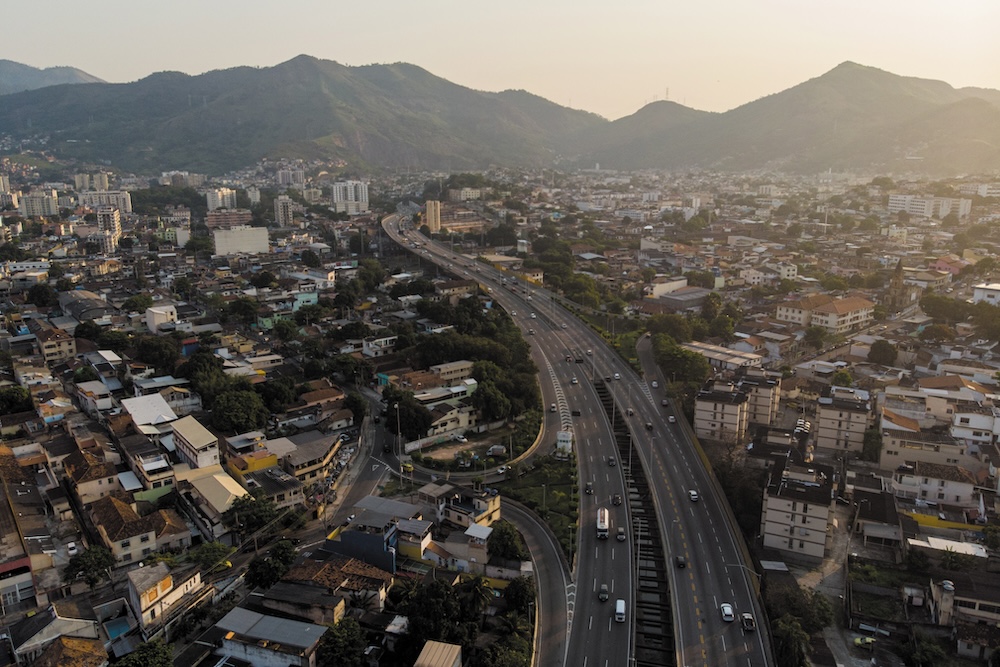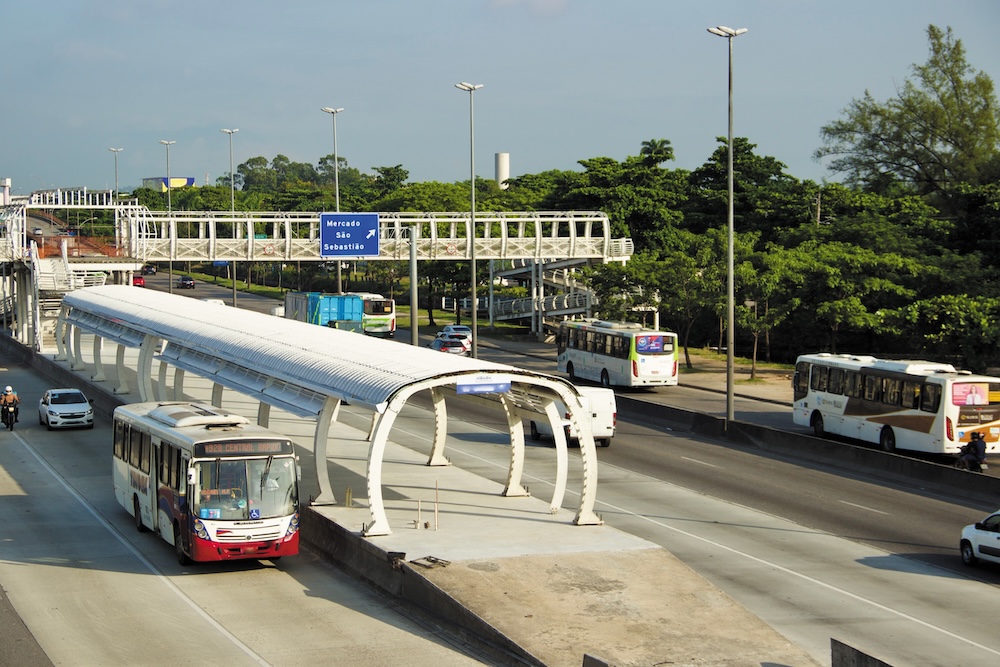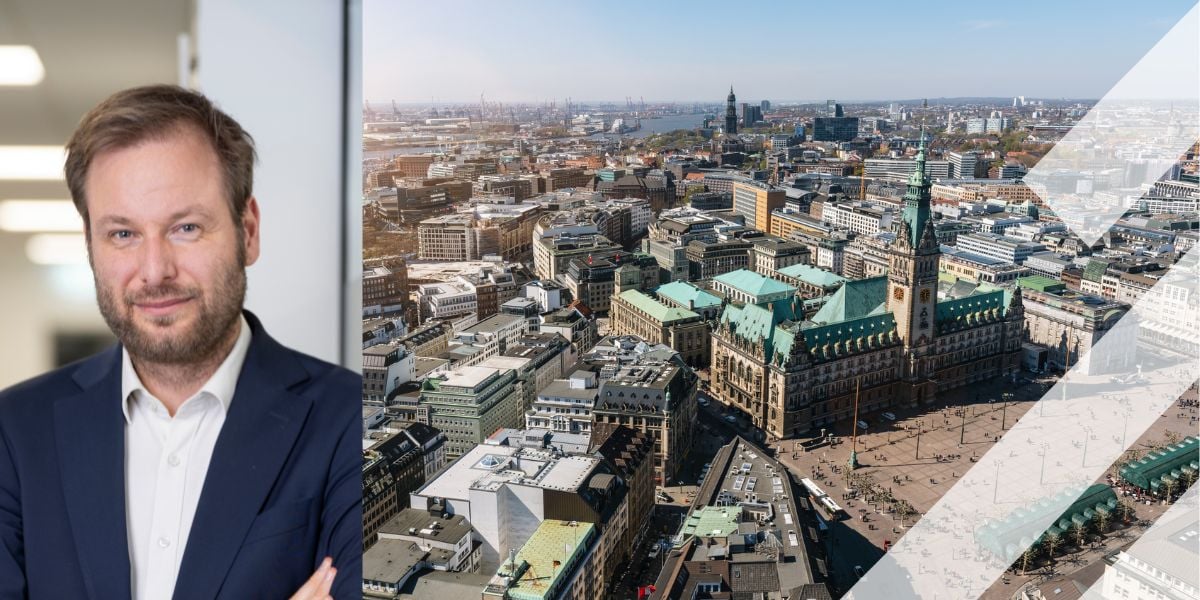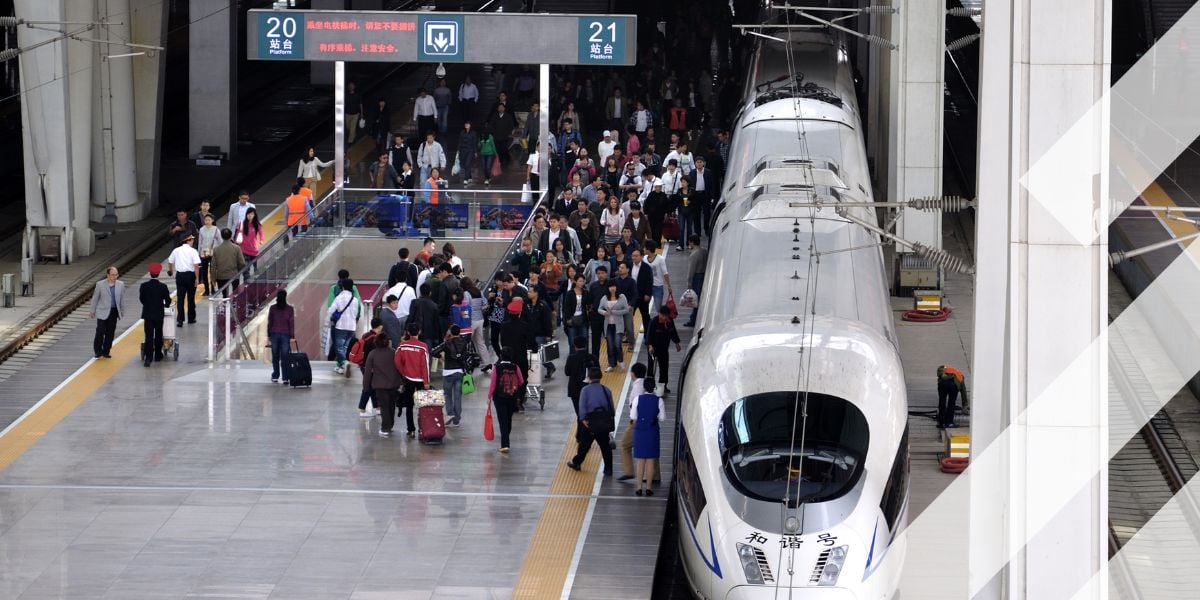Brazil’s battle with traffic congestion
Brazil, like much of Central and South America, has significant challenges in meeting the mobility needs of citizens in rapidly growing urban areas. But help is at hand in the form of intelligent transport systems and smarter public transit.
Congestion caused by growing use of private cars in the sprawling Brazilian metropolis of Rio de Janeiro demands solutions. There are many possible answers, but two that are being particularly focused on are the roll out of more effective traffic management as well as the upgrading and streamlining of public transport systems. A major issue for public transit in Brazil is that ridership and therefore revenues have not fully recovered from the Covid pandemic, meaning much of the focus is on encouraging passengers back onto services by improving efficiency, usability and affordability.

The 2016 Olympic Games in Rio marked the beginning of an overhaul of its mass transit system. In order to effectively serve the multiple venues built for the event, a bus rapid transit (BRT) service was created, running on dedicated lanes it transported around 2.2 million passengers over the course of the Games, which were generally agreed to be a huge success.
BRT systems have a huge cost advantage over building underground metro networks, however where their dedicated lanes must cross other roads they can still be subject to delays, moreover in Rio high fares were a disincentive to the use this service over shorter distances. Change required top-level action.
“In 2021 a court agreement between the city government and transport concessionaires resulted in changes to the regulations of the public transport sector,” says Maína Celidonio, transport secretary for the City of Rio de Janeiro. “The calculation of fares is now based on the distance travelled by buses. For this, real-time location information has become essential. As a result, new tools have emerged to monitor compliance with regulations, including pipelines, data lakes, and automatic fine dashboards. These technologies monitor compliance with established trips, irregular route deviations, and other parameters.”
BRT vehicles also now have sensors and embedded technologies that allow remote communication with an operational control centre, transmitting real-time information such as temperature, position, speed, images and audio.
“This abundance of information allows for a variety of applications, including real-time interaction with users through bus loudspeakers and mobile apps,” says Vera Ferreira, of CET-Rio, a leading traffic engineering company in the city. “It also allows drivers to interact with the control centre through audio messages and panic buttons, enabling immediate interaction with security and civil defence agencies.”
There’s an app for that
Live location data for public transport doesn’t just benefit public authorities, it also has significant advantages for passengers, who are able to access the information via apps, such as Moovit.
“Our app displays the live location of public transit vehicles via icons moving across the map in real time, providing users with greater insight into their chosen route’s progress,” says Marcelo Tavela, communications manager for Moovit Brazil “Alongside the real-time arrival predictions, this feature decreases uncertainty, enabling the user to choose the best route.”
Available in 30 cities in Brazil, including Rio de Janeiro, live location has proven to be a useful tool for users in places where transit data is not readily available from other sources, but it isn’t the last word in route-planning assistance from Moovit. It has also recently rolled out its Smart Cards feature with dynamic and personalised predictions about routes most suitable to a particular user at any given time. “The suggestions follow each person’s needs and habits, based on the previous use of the Moovit app,” explains Tavela. “The plan is to keep expanding local partnerships, so more users can benefit from a smart and frictionless commute.”
Upgrading traffic management
For those stuck in gridlock in private cars, however, knowing the live location of local bus services if of little use or comfort. While city managers would prefer drivers to leave their cars at home, they are not abandoning traffic management, with significant investments being made in ITS.
“Brazil’s market is evolving in urban and interurban areas, where we are implementing technology to improve mobility,” says Carlos Wiedmaier, Kapsch’s vice president of solution consulting for Latin America “For example, 10 Brazilian cities are integrating ITS field equipment into our EcoTrafix urban traffic control platform for purposes such as traffic optimisation and road monitoring.
“In interurban areas we are currently implementing solutions such as a tunnel traffic management system to improve the operational processes in southern Brazil. There are also plans for more video analytics, AI tools for traffic management, integrated solutions for more effective response to planned events and incidents, connected vehicle systems, and many other technologies aiming to improve road-user experience and reduce accidents and vehicle emissions.”

Another ITS giant, PTV, has ongoing operations in Brazil and is looking to develop systems alongside academics in the region. “Apart from helping our clients in their daily activities, we are creating a strong, connected, academic network,” says Luisa de Moura Chaves, senior business development manager at PTV. “We support professors, researchers and students studying ITS solutions to improve mobility. Their projects include, among others, prioritisation of pedestrians using intelligent signal controllers, use of driving simulators to predict driving behaviour to improve safety, studies in demand-responsive transit, autonomous vehicles, and big data.”
PTV is also preparing the next generation of transportation professionals via a competition. “The champion of our 2nd Academic Competition in Vissim of Latin America was from Brazil,” says Chaves. “The project, presented by the University of Santa Catarina, uses microsimulation to solve road-rail conflict in the southern city of Joinville.”
Ultimately the mobility solutions for Rio and Brazil’s other large cities as they attempt to cater for growing populations in the 21st century will be multimodal. The aim must be to maximise fluidity, comfort, order and safety for pedestrians, cyclists, passengers and drivers alike, with the aim of guaranteeing safe coexistence between all kinds of transportation in urban spaces.
This article was first published in Intertraffic World 2024
Share your story
Do you have an innovation, research results or an other interesting topic you would like to share with the professionals in the infrastructure, traffic management, safety, smart mobility and parking industry? The Intertraffic website and social media channels are a great platform to showcase your stories!
Please contact our Sr Brand Marketing Manager Carola Jansen-Young.
Are you an Intertraffic exhibitor?
Make sure you add your latest press releases to your Company Profile in the Exhibitor Portal for free exposure.





